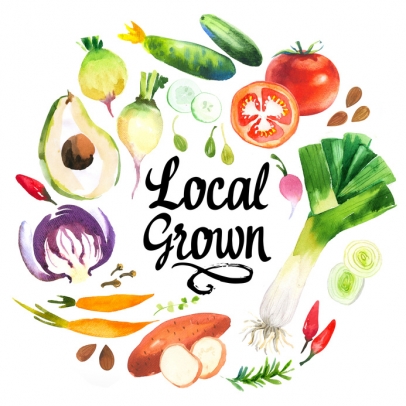No Farms, No Food - A Note From the Publisher
No Farms, No Food. No Farmers, No Food. We’ve all seen the bumper stickers on cars and trucks across the country. Today in Houston city limits, we’re an urban mecca with pocket parks, rooftop gardens, citrus trees in our backyards, raised beds, school gardens and a few small farms. Not too long ago, the landscape within the outer loop was much different.
As a newly arrived citizen, I was struck by that fact at the Memorial Village Farmers Market, listening to a woman describe what the area looked like when she was a girl—less than 70 years ago. She described people traveling on horseback; active farms with farmhouses and hundreds of acres of fields. I thought, what a dramatic and fairly recent change for a city that is the fourth (some argue third) largest city in the United States.
We have all experienced nostalgia for times past and bear witness to the change of places we love. I spent my childhood summers in Wellfleet, Massachusetts, where there was a historic town, no traffic lights and a single grocery store. In the summers the population would swell and in September the “townies” would sigh a breath of relief. My grandparents marveled at the changes over the decades, as did my father. I witnessed the building of strip malls, road improvements and the doubling of year-round residents.
Here in Houston the change in the landscape seems larger and much faster. New and ever-expanding highways have helped the change. The theme of this issue was born when Editor Francine Spiering and I were talking about what the agricultural landscape in Houston looked like in the not-too-long-ago past. We asked farmers, native Houstonians, historians about it and boy did we get a plethora of stories!
In our Nostalgia issue, we introduce a map: an imagination of Houston’s farming roots. You’ll meet historian Randall McKinney, who is brimming with stories and a wealth of information. David Leftwich takes a look at the history of rice farming from an intriguing angle while Jean Hare shares her memories and the history of Sugar Land. Inside you’ll also find classic recipes, stories of grandparents sharing the love of cooking and more.
While growth is inevitable, “No Farms, No Food” is more than a bumper sticker: It is the truth. We must find ways to protect and keep our farms. Farming needs to be a profession young people find appealing, knowing they can earn a living wage to support a family. In 10 years farming may look different and I hope we will be talking about those changes and not lamenting that all the viable farms have disappeared. Eat local, buy local and support efforts to keep agriculture in our present and future. The devasation Harvey brought to our community hightlights this - our vegetable farmers were hit particularly hard with the storm. It was heartbreaking to not see Gunderman Farms at Saturday's Meyerland Farmers Market. We need to support each other and our farmers. If you are able to send financial support for our local growers and producers, Texas Organic Farmers and Gardeners Association (TOFGA) has a list of agencies you can donate to. Click HERE for the information.
I hope you enjoy this issue as much as we have enjoyed putting it together. Please share your favorite memories, pictures and recipes with us.
Cheers,
Kim




